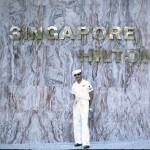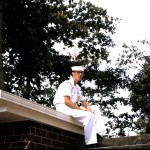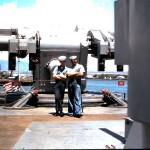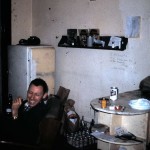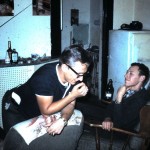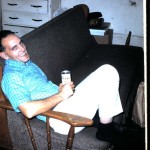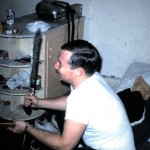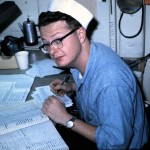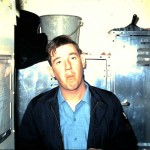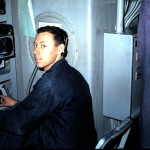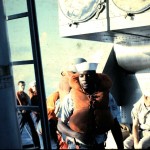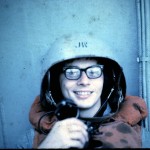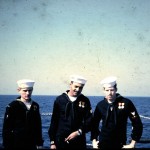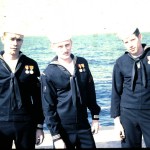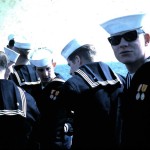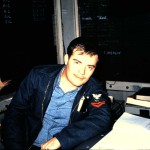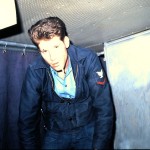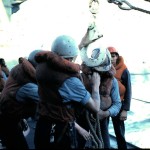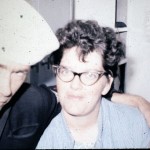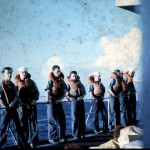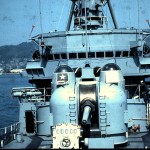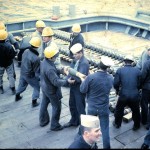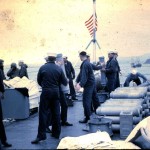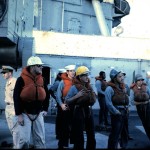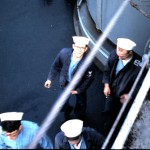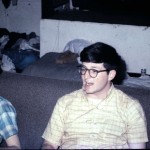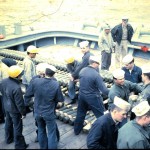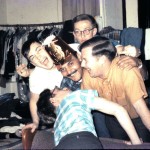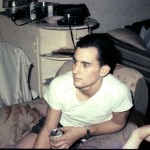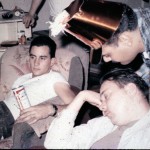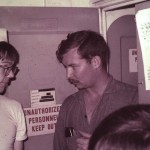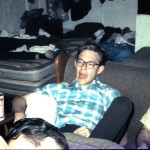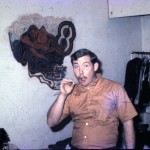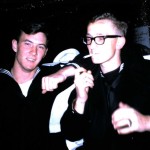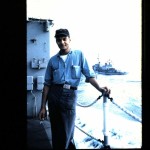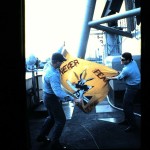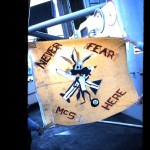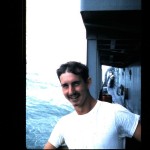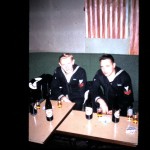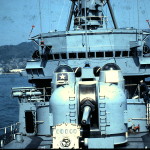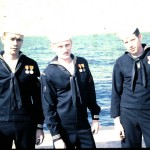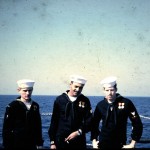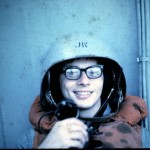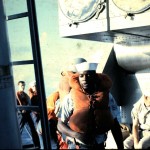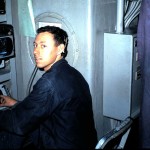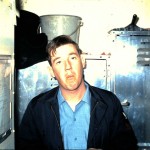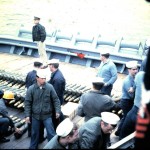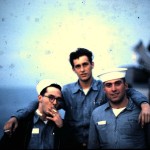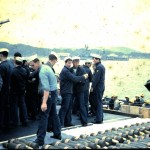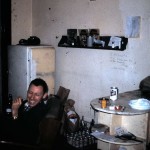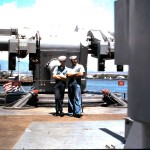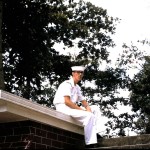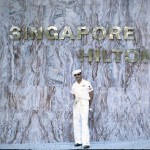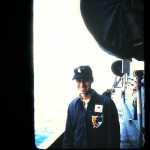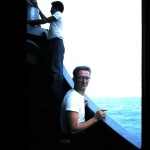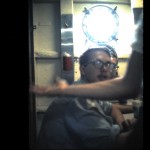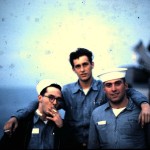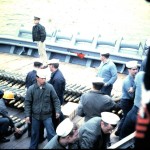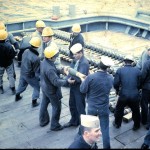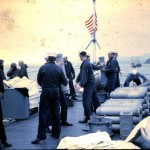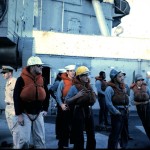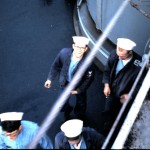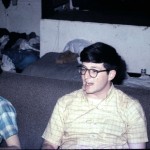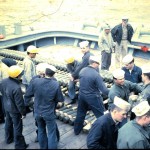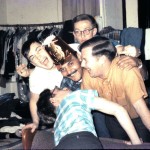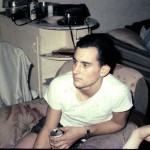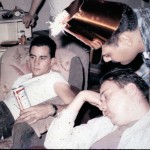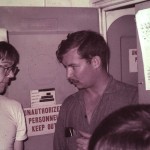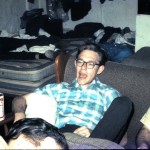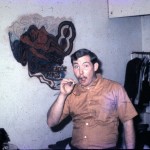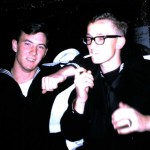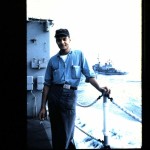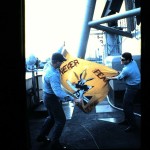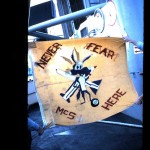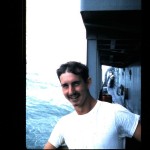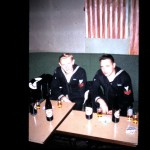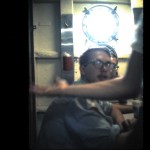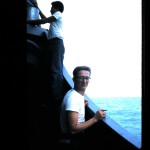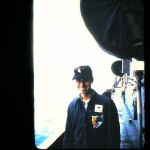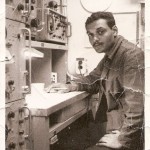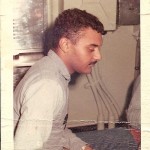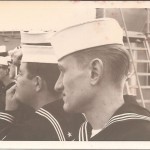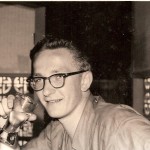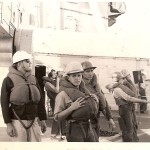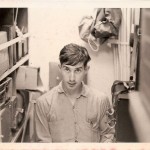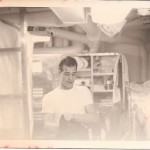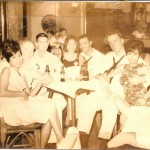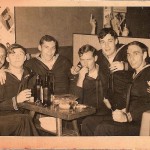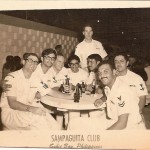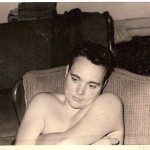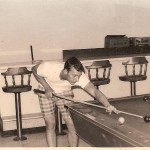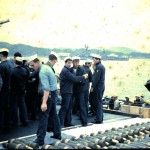1967
Commanding Officer
Executive Officer
LCDR William Donlan
Change
LCDR Leland S. Beedle
Deck Logs – 1967 – from national archives (PDF file format)
The USS Lynde McCormick is notified in January that she had been awarded the honorable distinction of her second consecutive Battle Efficiently E award. She is also awarded a second Operations Department Excellence award, a second ASW A award, and a third Missilery E award.
The USS Lynde McCormick was making waves proving she could be counted on to take any task and carry it to success. These assets earned her distinction and praise.
The thorough overhaul in dry-dock at Long Beach, California, was completed 23 March 1967.
Refresher training began on 15 May 1967, and was interrupted on the 27 May 1967 when she rushed to the aid of a stricken crewmember of SS Pacific Comet.
The USS Lynde McCormick continues operating out of San Diego, California, until 17 August, at which time she departs for her fourth WestPac tour of duty engaging missions in Vietnam.
The USS Lynde McCormick’s ports of call on this cruise include Hawaii, Sasebo, Olongapo, and Hong Kong.
From Deck Logs – provided by Lenard Shaw
OCTOBER 1967 :
November 1967:
December 1967:
On December 19, 1967, while taking part in Operation Sea Dragon, the USS Lynde McCormick and the USS Newport News CA 148 (USS Newport News info at Naval Historical Center) come under fire from 28 North Vietnam artillery shore guns. Over one thousand rounds were fired at the ships. The USS Lynde McCormick is hit by shrapnel and sustains minor damage. The USS Lynde McCormick and the USS Newport News return fire. The USS Newport News fires 732 counter battery 8″rounds and the USS Lynde McCormick puts mount 52 on automatic and returns fire. Captain John McCook was on the bridge and took immediate control of the con, ordering full flank speed, and began a series of zig zag maneuvers that kept the enemy shots landing where we used to be and not where we were. Captain John McCook became a hero that day to the crew. We were thankful for his wisdom, experience, and a cool head which allowed us to prevail at the end of the day. A junk boat in the very near vicinity was suspected of providing fire support for the enemy guns and was destroyed soon after spotter aircraft from the USS Kearsarge LHD 3 reported radio equipment being thrown overboard from the junk.
For more about taking part in Operation Sea Dragon and coming under fire from 28 North Vietnam artillery shore guns – see the following link or watch the YouTube video.
On December 24, 1967, the USS Lynde McCormick had a 1200 psi boiler rupture in the forward boiler room causing a massive explosive like effect injuring two shipmates seriously in port at Sasebo, Japan.
The cause of the Boiler explosion (1B boiler) was the rupture of two rear wall 2 inch boiler tubes and it happened Christmas eve 1967. As a matter of note, the same boiler (1B) was on-line when we departed Sasebo for Hong Kong and suffered another boiler tube casualty, but in the superheated tubes. – Carlton “Mike” Reed, BTCM (SW) U.S.N (Ret) 1961 – 1968
24 December 1967 – I was the duty MAA on the mess decks in charge of setting up for the movie. I was getting the coffee made and rounding up men to clean up after the movie. The movie was just starting when the boiler tubes blew. The ships’ power was lost and everything went dark. I ran to the outside port side of the ship and shut down the boiler room by turning off the emergency shutoff valves. I then ran inside and went down the escape hatch holding a broom handle in front of me to find any steam leaks. (the way we were taught) R. Mata was behind me all the way down in the dark passage way. The air was hot and humid, filled with dirt and dust and smoke and white bits of asbestos floating like snow. The battle lanterns were on and we managed to find one badly injured crewmate. I carried him to the escape hatch. Thank god for R. Mata, he pushed me up the ladder with that injured man on my shoulder. We were very scared. The injured mans’ skin was pealing off and he was in shock. There were some men in the main passageway who grabbed him as I was coming out. We put the two injured men in a pickup bed and took them to the base dispensary. We gave blood while we were there. We weren’t trying to be heroic. We were just doing what we were trained to do.
Jim Murch
SN / 1st Division
1966 – 1968
24 December 1967 – In port, Sasebo, Japan. I was the duty ET in charge of running the movie projector and making popcorn that night. The events that followed were surrealistic and not unlike the fictional plot of the film we were watching, much like many other events that would come into being in the next few years. We had not gotten very far into the movie, when I noticed that the projector light was getting dimmer and the movie was slowing down. That was a curious sight. One of the forward boilers had burst a tube. The forward door to the mess decks blew open from a huge force of hot, moist air, with smoke and snow like particles of asbestos filling the mess decks. The lights went out and confusion was suddenly amongst us. This all happened in a literal second. I went to the door leading to the port side main deck and opened it to get some fresh air moving into the mess deck. What happened next was a blur, all the men went into a firefighting and rescue mode that all the training we had, never approached. The only light we had was from the battle lanterns. Cool heads made a bad situation turn into the right course of action. I do not recall having an emergency station to go to, but I went into the forward passage way to help put out what I thought was a fire. The men had broke out the fire fighting gear and were standing by waiting for direction. I saw someone lifting a man out of the hatch leading to the forward boiler room. I went over and helped pull the injured man up out of the hole. We laid him down in the passageway. It was not a good sight. I was only 20 years old and I never before had to deal with those kinds of injuries or any other kind of injuries to anyone. We managed to get through the next hour and commenced cleaning up. It was a long night. We were lucky to be in Sasebo, where repairs wereeasily made. I will never forget that night or the time the same thing happened again, about the same time of night, a few weeks later while we were underway leaving Sasebo. We went back into port and repairs were made again. We had a lot of time in port and no money. I would like to know the names of the two injured men. Little did I suspect that even more extreme events would unfold during the time I was onboard. Those times were turbulent, exhausting, educational, maturing, wild, crazy, hard, and exciting. I would not do it over if I had a choice, but I would not have turned out the same. I would probably be the lesser man for not being there.
David Newham
ETR2
1967 – 1970
Concerning the SS Pacific Comet – We were using the whale boat to pick up a sick man from the SS Pacific Comet, in a stretcher, when two great whites sharks came along side the whale boat ,very close, to menace us while we were bringing the sick man back to the ship. The Gunners Mates shot at them with M-1 rifles from the deck of the McCormick. We were near Coronado Island at the time.
Jim Murch
SN / 1st Division
1966 – 1968
Command history report 1966 to 1967, from the Commanding Officer, CDR William Henry Rowden, to the Chief of Naval Operations – in PDF format
Photos by Michael Champion
- From Michael Champion
